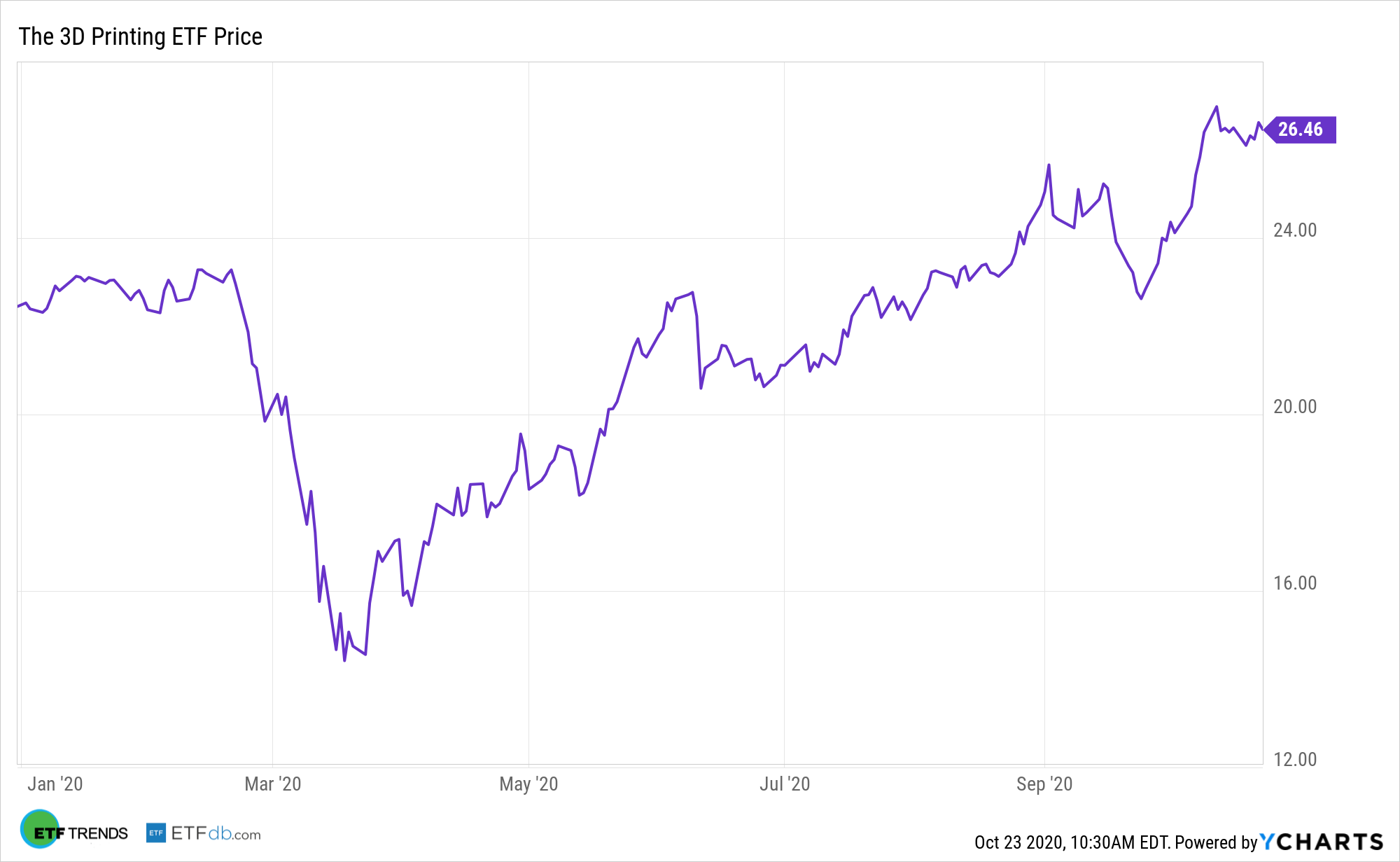3D printing was one of the original disruptive technologies. Then, investors largely forget about it. They shouldn’t have because the 3D Printing ETF (CBOE: PRNT) is quietly up almost 19% this year.
Passively managed PRNT offers leverage to that department as its benchmark “is composed of equity securities and depositary receipts of exchange-listed companies from the U.S., non-U.S. developed markets and Taiwan that are engaged in 3D printing-related businesses within the following business lines: (i) 3D printing hardware, (ii) computer-aided design (“CAD”) and 3D printing simulation software, (iii) 3D printing centers, (iv) scanning and measurement, and (v) 3D printing materials,” according to Ark.
Up 17% over the past month, PRNT could have plenty more upside ahead.
“The global market for 3D printing is poised to explode — projected to rise more than 300% by 2025 — to $44.4 billion — up from $10.87 billion in 2018,” according to Banyan Hill Publishing. “The technology has already transformed a range of industries, from aviation and automotive to consumer goods and food.”
Read This Fine PRNT
PRNT debuted nearly three years ago as the first US-listed ETF dedicated to the 3D printing theme. The fund is one of two passively managed products from New York-based Ark Investment Management. ARK believes 3D printing will revolutionize manufacturing by collapsing the time between design and production, reducing costs, and enabling greater design complexity, accuracy, and customization than traditional manufacturing.

While 3D printing has applications across myriad industries, healthcare is one of the most fertile territories for 3D printing growth.
“But modern medicine is one of the biggest beneficiaries of 3D printing. It’s being used to produce dental implants and spinal discs,” notes Banyan Hill. “In Florida, doctors and medical students are using 3D-printed patient models — made from MRIs — to perfect surgical techniques before operating. These are just the latest examples of how 3D printing and precision medicine are teaming up to give our health care system an America 2.0 upgrade.”
The medical implants market could be an epic growth frontier for some PRNT components going forward.
“The global 3D printing medical implants market consists of various segments that are segmented by component, implementation technology, application, end-user, and by region. The implementation of technology is further sub-divided into laser beam melting, electronic beam melting, droplet disposition, and others. Out of these, the laser beam melting segment held the largest market share of around 44% in the year 2018 and is anticipated to grow with a CAGR of around 21% over the forecast period and cross a value of around USD 2400 million by the end of 2027,” notes Research and Markets.
For more on disruptive technologies, visit our Disruptive Technology Channel.
The opinions and forecasts expressed herein are solely those of Tom Lydon, and may not actually come to pass. Information on this site should not be used or construed as an offer to sell, a solicitation of an offer to buy, or a recommendation for any product.

